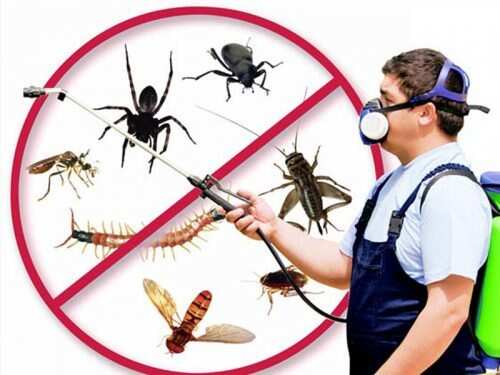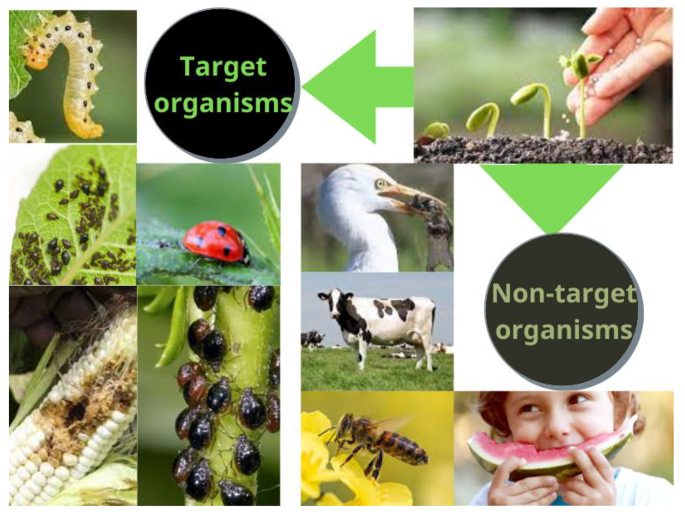The Basic Principles Of Eco Bed Bug Exterminators Dc
5 Easy Facts About Eco Bed Bug Exterminators Dc Described
Table of ContentsThe smart Trick of Eco Bed Bug Exterminators Dc That Nobody is DiscussingThe Main Principles Of Eco Bed Bug Exterminators Dc The Single Strategy To Use For Eco Bed Bug Exterminators DcIndicators on Eco Bed Bug Exterminators Dc You Need To KnowThe smart Trick of Eco Bed Bug Exterminators Dc That Nobody is Talking About
Since chemicals are toxic, they are additionally potentially harmful to people, pets, various other organisms, and the environment. Therefore, people that utilize pesticides or consistently come in contact with them have to recognize the loved one poisoning, prospective wellness impacts, and preventative measures to reduce direct exposure to the products they utilize. Threat, or threat, of utilizing pesticides is the possibility for injury, or the level of risk associated with making use of a pesticide under an offered collection of conditions.
Nonetheless, applicators can lessen or almost get rid of exposure-- and thus minimize threat-- by adhering to the label directions, using personal safety garments and tools (PPE), and taking care of the pesticide correctly. For instance, more than 95 percent of all pesticide exposures come from dermal direct exposure, largely to the hands and lower arms. By wearing a pair of unlined, chemical-resistant gloves, this kind of direct exposure can be nearly gotten rid of.
The dangerous effects that take place from a solitary exposure by any route of entrance are labelled "severe impacts." The 4 paths of exposure are dermal (skin), breathing (lungs), oral (mouth), and the eyes. Severe toxicity is identified by checking out the facial poisoning, inhalation toxicity, and oral poisoning of guinea pig.
The Eco Bed Bug Exterminators Dc Statements
Severe toxicity is determined as the amount or focus of a toxicant-- the a.i.-- required to kill 50 percent of the pets in an examination population. This step is typically expressed as the LD50 (deadly dose 50) or the LC50 (lethal concentration 50). In addition, the LD50 and LC50 worths are based upon a solitary dose and are tape-recorded in milligrams of chemical per kg of body weight (mg/kg) of the examination pet or partially per million (ppm).
The lower the LD50 or LC50 value of a chemical item, the higher its poisoning to human beings and animals. Chemicals with a high LD50 are the least poisonous to humans if utilized according to the directions on the item label. The chronic poisoning of a pesticide is figured out by subjecting examination pets to long-lasting direct exposure to the active ingredient.
The persistent toxicity of a pesticide is a lot more tough than severe toxicity to identify through research laboratory evaluation. Products are categorized on the basis of their loved one severe poisoning (their LD50 or LC50 values). Chemicals that are identified as extremely toxic (Poisoning Classification I) on the basis of either oral, facial, or inhalation toxicity should have the signal words DANGER and POISON printed in red with a skull and crossbones symbol plainly showed on the front panel of the bundle tag.
The severe (single dosage) oral LD50 for pesticide products in this team ranges from a trace total up to 50 mg/kg. For instance, direct exposure of a few drops of a product taken orally can be fatal to a 150-pound individual. Some pesticide items have just the signal word DANGER, which tells you absolutely nothing concerning the severe poisoning, just that the item can create serious eye damage or extreme skin inflammation
More About Eco Bed Bug Exterminators Dc
In this group, the intense dental LD50 varieties from 50 to 500 mg/kg. A tsp to an ounce of this product could be fatal to a 150-pound individual (bed bug exterminator). Chemical items classified as either slightly hazardous or fairly safe (Poisoning Classifications III and IV) are required to have the signal you could look here word CAUTION on the chemical tag

All pesticide toxicity chemical, including the Consisting of, can be found on discovered product's Item Safety Product Safety and security InformationMSDS). Chemical labels and MSDS can be obtained from stores or produces - https://pxhere.com/en/photographer/4214370. The signs of chemical poisoning can range from a moderate skin inflammation to coma or also fatality.
People likewise vary in their level of sensitivity to various levels of these chemicals. Some people might show no reaction to an exposure that might cause severe health problem in others (exterminator near me). Due to prospective health and wellness issues, pesticide individuals and handlers have to acknowledge the common symptoms and signs of chemical poisoning. The impacts, or signs and symptoms, of chemical poisoning can be extensively specified as either topical or systemic.
All about Eco Bed Bug Exterminators Dc
Dermatitis, or inflammation of the skin, is approved as the most generally reported topical result linked with chemical exposure. Some individuals tend to cough, hiss, or sneeze when exposed to chemical sprays.
This sign generally subsides within a couple of minutes after an individual is gotten rid of from the direct exposure to the irritant. Nonetheless, a response to a chemical product that causes somebody not only to sneeze and cough however additionally to develop severe intense respiratory signs is more probable to be a true hypersensitivity or allergy.
Systemic impacts are rather various from topical effects. They usually happen far from the original factor of call as a result of the pesticide being soaked up into and distributed throughout the body. Systemic impacts typically consist of nausea or vomiting, vomiting, tiredness, migraine, and digestive tract conditions. In innovative poisoning situations, the individual may experience adjustments in heart rate, trouble breathing, convulsions, and coma, which might bring about fatality.